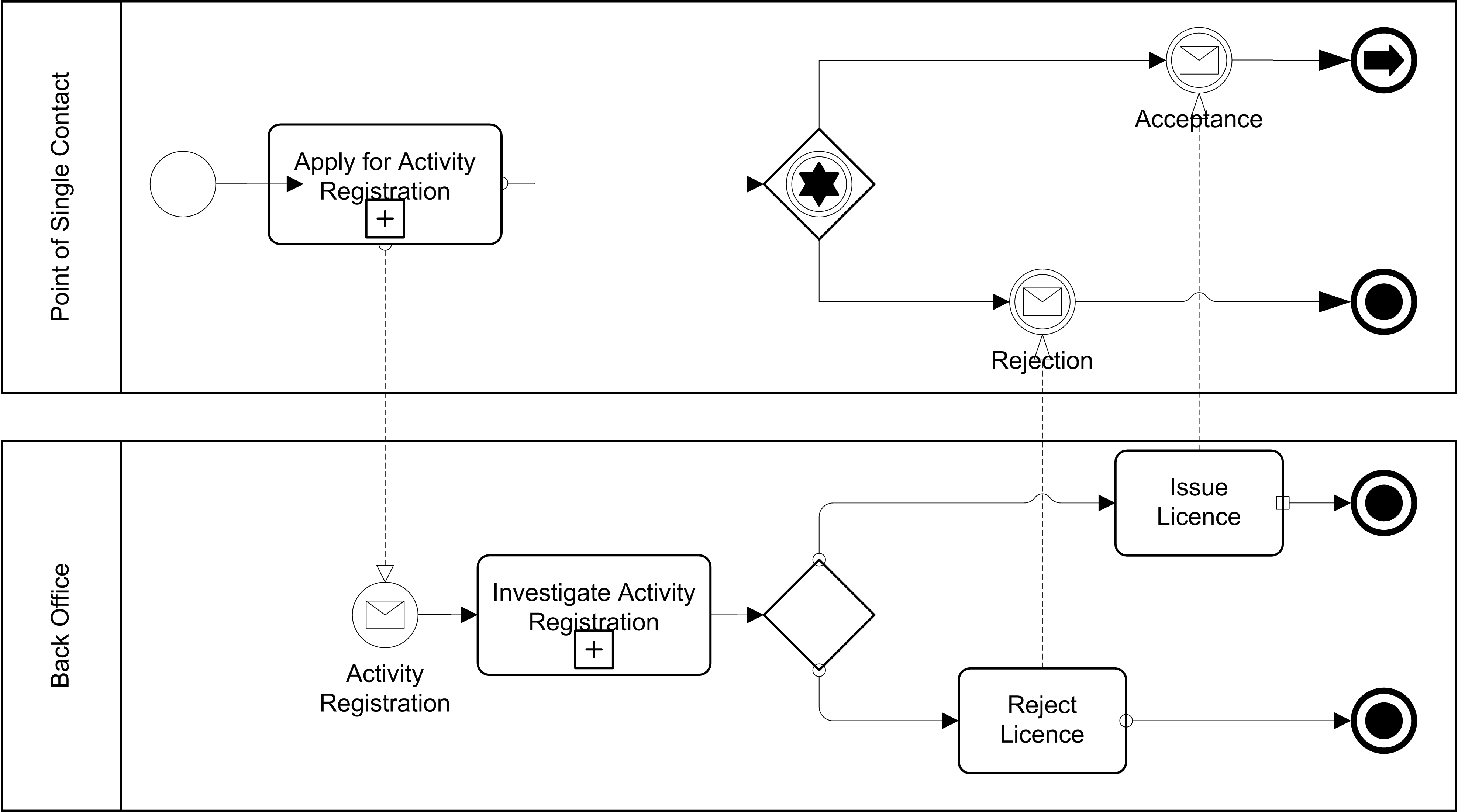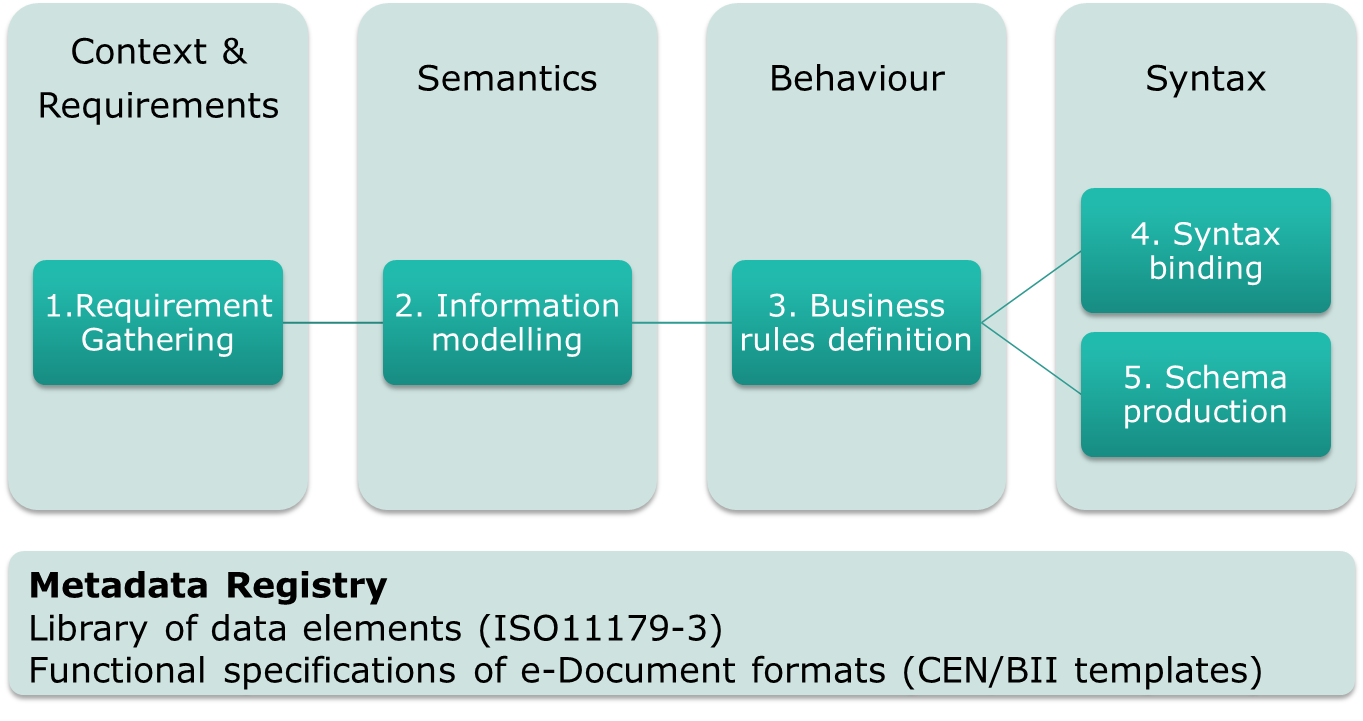e-Document engineering pilot
Using a metadata registry for e-Document engineering
Using a metadata registry for e-Document engineering
This page describes a mini-pilot on e-Document engineering that was carried out in the context of Action 2.15 of the ISA Programme in the period February – March 2014. The pilot was conducted in collaboration with the e-SENS WP6.2 Competence Cluster on Semantics, processes and Documents. The objectives of the pilot are:
The metadata registry documents the data element concepts and the data elements (as identified in the information requirements). The goals, requirements and business rules are also added to the metadata registry. The whole process is then stored in a triplestore, in order to generate a spreadsheet or to directly create a .XSD file. This approach offers complete traceability: from the requirements over the semantics to the syntax.
Our pilot on e-Document engineering uses the example of the activity registration of a business in a foreign Member State. The example was provided by e-SENS WP5.4 on Business lifecycle piloting. On this page we only pilot the use of the e-Document engineering method to generate e-Document specifications. The actual Activity Registration pilot will be conducted later on by the e-SENS large-scale pilot.

We use a standard e-Document engineering method that is largely based on the CEN/BII method for e-Document engineering. It can be presented as follows:

The first step is to define the objective of the business process. The specific goals to be achieved with the exchange of e-Documents, along with their scope are described. The business process is then illustrated with key examples of real-life scenarios and the specific requirements linked to the goals are derived. The information is gathered in the spreadsheet template based on CEN/BII.
The information modelling phase identifies and describes the information to be exchanged according to the requirements. The attributes and cardinalities of the data elements are described, along with the relationships between the information components and the requirements. The information model requirements are described in the spreadsheet template of CEN/BII and depicted using a conceptual modelling language (ISO11179 MDR). Semantics and concepts from standard vocabularies are reused wherever possible.
Assertions, constraints and derivations related to aspects of e-Documents are described in the business rules, in terms of the goals and requirements identified in the first phase. The business rules are documented in the CEN/BII spreadsheet template.
Finally, there are two options to produce physical artefacts to help developers implement the e-Documents according to the format rules:
The first option is syntax binding, where the information requirement model is mapped to an existing syntax model and the usage guidelines are specified.
The second option is to produce a new e-Document format. Schema production should be applied when there are no recognized international standards for the industry and business process the project is targeting. The Crane Software GC-to-UBL NDR script is used to generate XML Schemas.
Learn more by reading the tutorial on the use of Crane's Genericode-to-UBL-NDR to extend the Core Vocabularies and create e-Document formats.
Using our ontology inspired by the ISO 11179-3 meta-model, we have documented the following libraries of data elements:
We have also added some mappings between the first two libraries.Start browsing the registry with the following examples:
Or use the box below to search the registry for object classes and data elements.